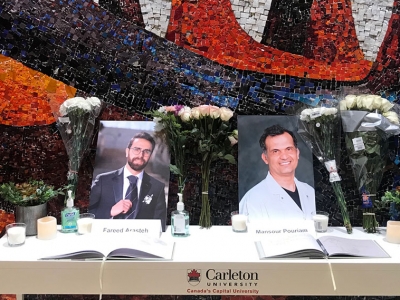By Dan Rubinstein
The road map to Carleton University’s bright future has taken a couple of big steps toward becoming a reality.
After a year-long process that engaged the whole community, Carleton’s Strategic Integrated Plan (SIP) was approved by the university’s Board of Governors at its June 2 meeting on the heels of Senate approving the SIP on May 29.
The plan will be finalized over the summer, including a full design treatment, and will be officially launched in the fall.
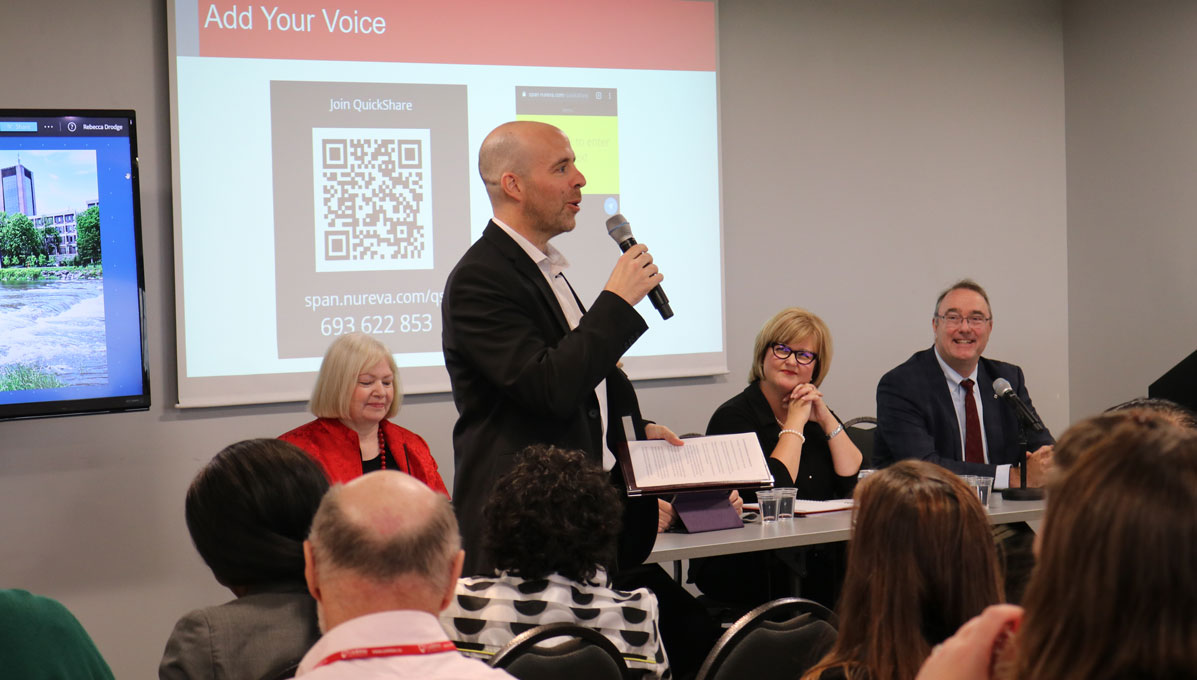
President Benoit-Antoine Bacon speaks at at the Strategic Planning Speaker Series
“Carleton must leverage our location in the capital city, Ottawa, to be deeply connected to the complex issues of our world and our time,” President Benoit-Antoine Bacon writes in his introductory message.
The SIP, he continues, “must impact not only Carleton’s future, but [also] the future of our communities, our society and our planet….
“We hold ourselves to a responsibility to make a difference for the greater good. With our aspirations clearly stated and all our creative energies engaged, we begin this effort in earnest.”
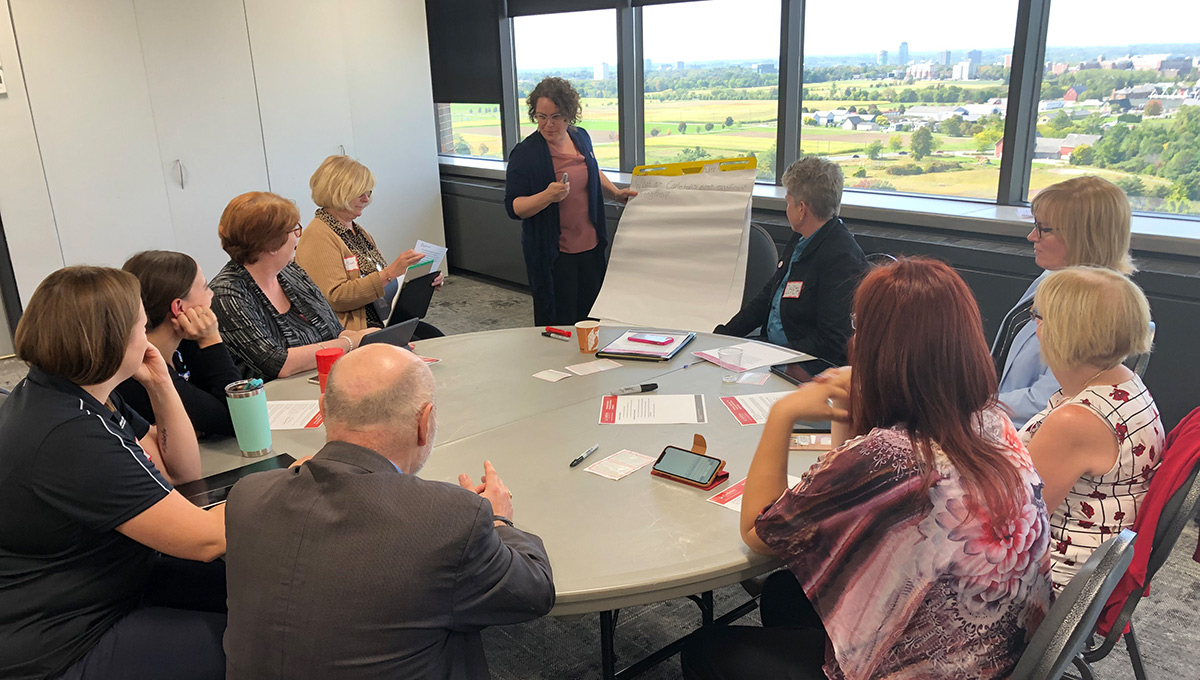
Unique Triangular Shape
The SIP, which opens with an acknowledgement of the Algonquin Anishinaabeg people within whose unceded, unsurrendered territory the university is located, is organized around the unique triangular shape formed by the Carleton campus — “a natural symbol of strength” and “the mathematical symbol for change.”
“This is a meeting place, a convergence of three major transportation routes: one built by human ingenuity, one created as an urban link, and one an historic waterway,” the SIP states.
“There is power in this convergence. It frames our values and our commitments. And it is the point from which we navigate to a bright and hopeful future.”
The western side of the triangle follows the iconic Rideau Canal. This speaks to the “ingenuity and innovation that helped establish this city and a waterway that tells a story of the creation, application and mobilization of knowledge.”
The strategic direction ascribed to the canal — “Share Knowledge, Shape the Future” — entails core aspirations such as preparing students for success in an ever-changing world, leveraging the power of research to solve critical issues, approaching teaching and pedagogy with imagination and new expectations, and embedding interdisciplinarity and collaboration into Carleton’s culture.
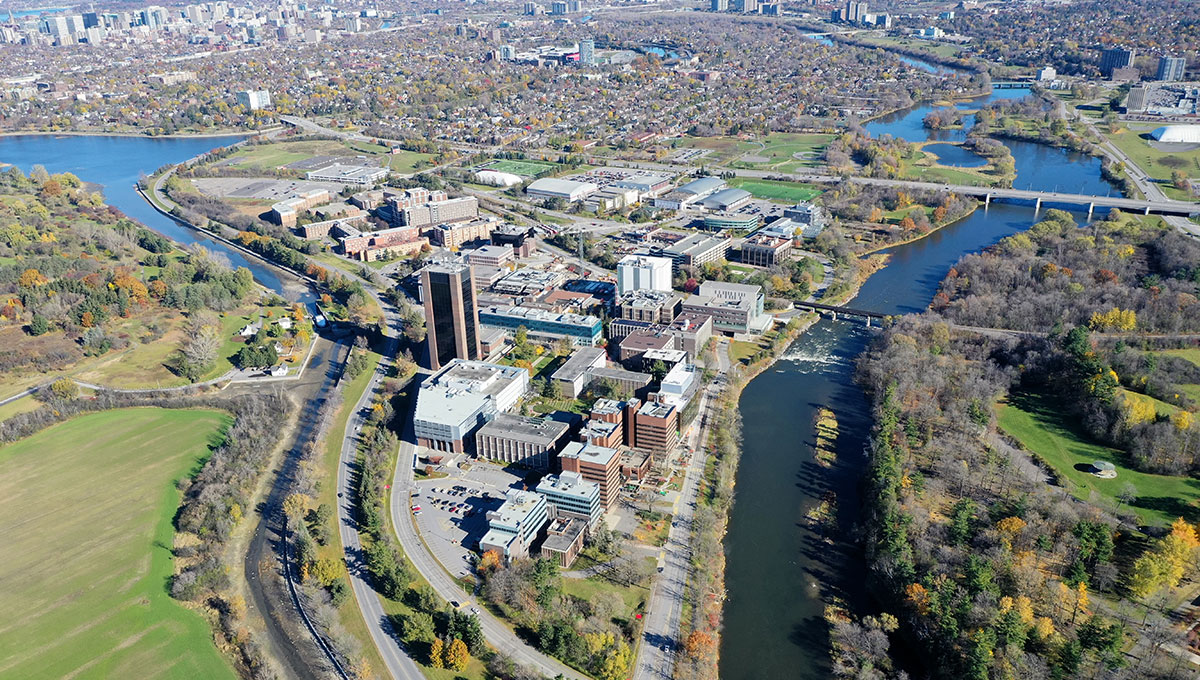
But as the SIP acknowledges, the history, symbolism and construction of the canal were complex, and its past includes the exploitation of immigrant workers and environmental practices that would not be acceptable today. This counterbalance, the document says, serves as a reminder “that the cost of progress is not borne equally by all people” and that “innovation and effort can respond to real societal challenges, but only if both the burdens and the rewards of knowledge are shared.”
The eastern border of the triangle is marked by Bronson Avenue, an important arterial road that links the university to the community, from local neighbourhoods to the cultural and political core of downtown Ottawa, as well as to the airport — “the gateway to the world.”
This direction — “Serve Ottawa, Serve the World” — will encourage community engagement in research and learning, and the development of partnerships with purpose.
The Rideau River — Pasapkedjinawong to the Anishinaabeg — flows along the southern axis of the triangle, “moving forward to a prosperous future with momentum and resilience, reminding us of our connection to the natural world.”
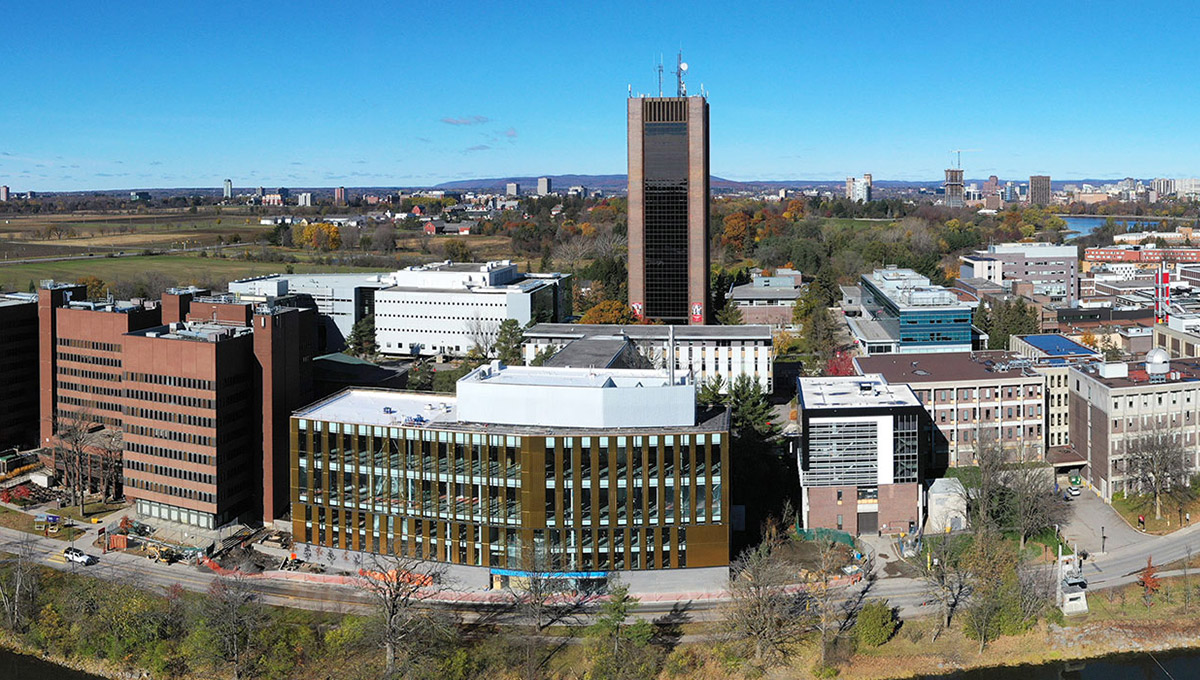
Summarized as “Strive for Wellness, Strive for Sustainability,” this direction calls upon the Carleton community to enhance personal wellness and growth, to be a national and international leader in both sustainability and accessibility, and to learn and take action together to achieve reconciliation.
Together, these three powerful directions, the SIP declares, frame “everything we stand for at Carleton: the power of higher education and innovation, the value we place on community and collaboration, and the importance of sustainability and wellness.”
These themes are especially relevant during the COVID-19 pandemic, when innovative action and new solutions are more critical than ever.
“Carleton is beginning the first steps in a journey of unknowns in a time of turmoil,” says SIP task force member Patricia McGuire, an Indigenous knowledge scholar from the School of Social Work. “This takes courage and perseverance and a willingness to explore all sides. This land calls to us for kindness, compassion, gentleness and a willingness to be open to new ideas and concepts. Our future is unknown, yet we are built on solid ground and we will succeed.”
Ultimately, the SIP “lays out the highest-level actions the Carleton community can take to meet the challenges of our time and the opportunities of the future” and is “intended to guide more detailed planning and measurement within faculties, departments and administrative teams.”
To help the Carleton community navigate toward these next steps, the SIP calls upon people to align their planning, to step up to the challenges of our time, to tell our story, and to be strong and positive.
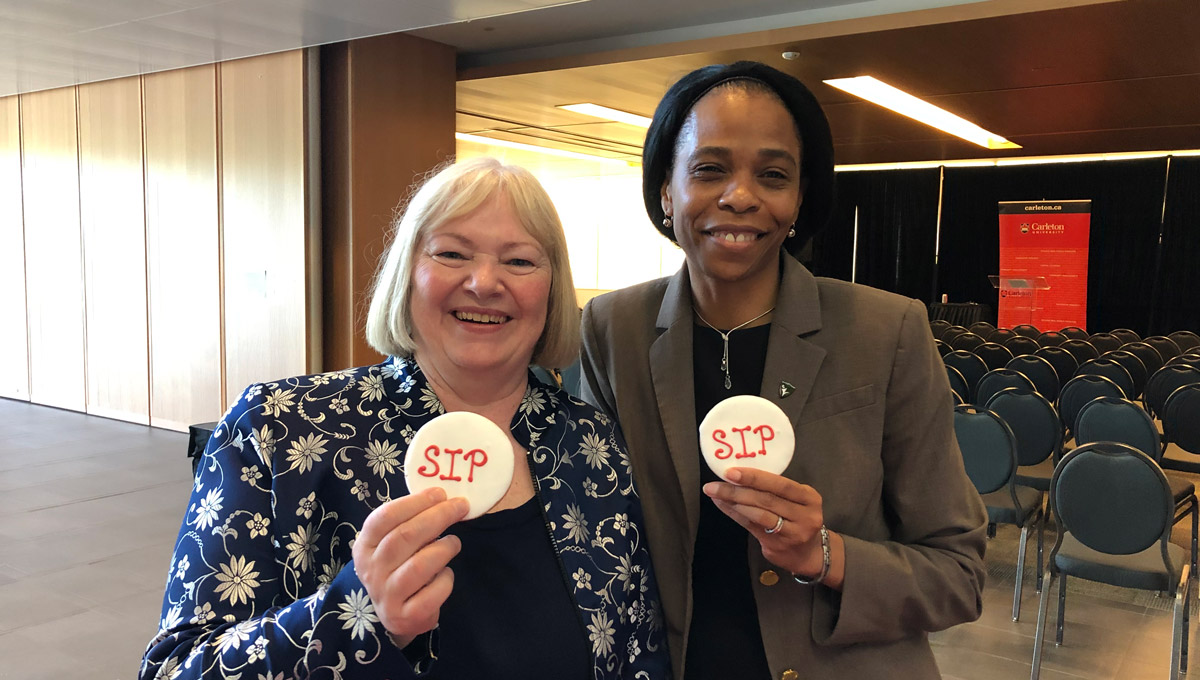
Global Challenges High on Agenda
The context for the SIP — its point of departure — includes global issues such as public health concerns, technological change, an accelerating climate crisis, worldwide migrations and affronts to truth and democracy.
Nationally, Carleton and Canada face “political challenges, an aging population, a need for greater understanding and more diverse perspectives around accessibility and inclusion, and the difficult legacy of colonization.”
In Ontario and Ottawa, new economic and cultural opportunities are arising for some people, “while health, ecological, infrastructure and other social challenges burden many more.”
Moreover, the “very nature of education is shifting. Students are eager for new instructional models, and the value of a post-secondary degree is under scrutiny as more accountability is demanded from public institutions.”
Amid this backdrop, the Carleton community participated in a broad and consultative process to create the SIP.
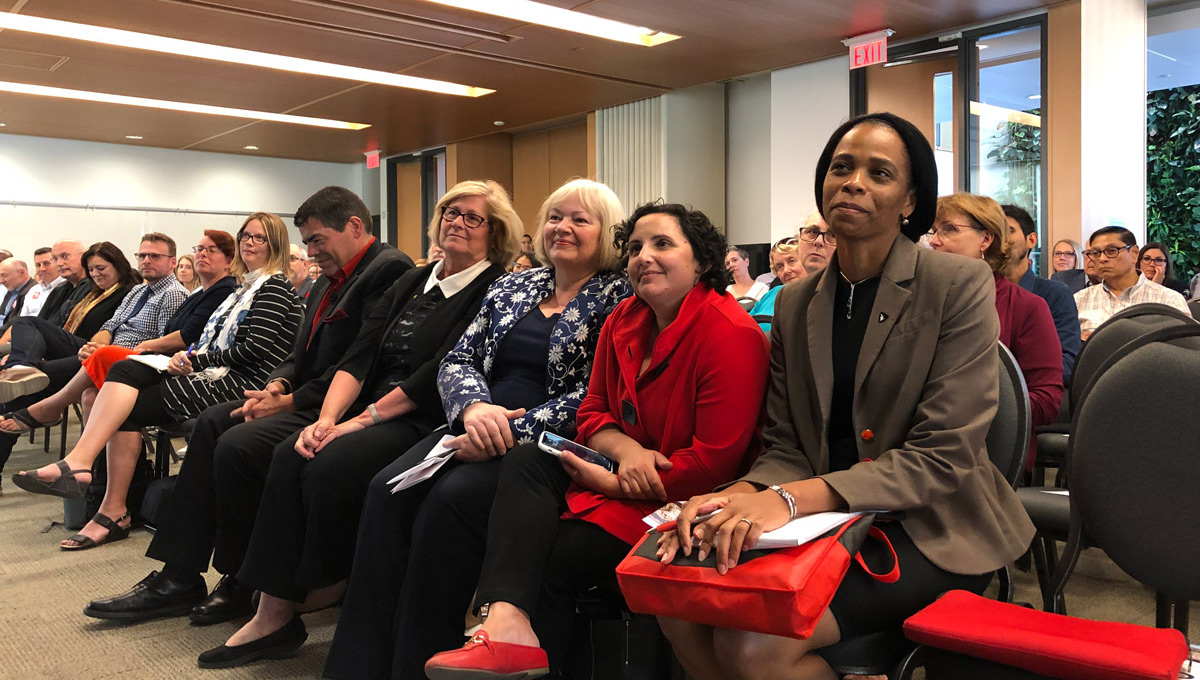
Ken Steele with Task Force co-chairs Cindy Taylor, Lorraine Dyke, Betina Appel Kuzmarov, and Patrice Smith
In June 2019, four collaborative leaders were named as co-chairs of the SIP Task Force: Lorraine Dyke, deputy provost (Academic Operations and Planning); Betina Appel Kuzmarov, clerk of Senate; Patrice Smith, dean, Faculty of Graduate and Postdoctoral Affairs; and Cindy Taylor, assistant vice-president, Human Resources.
During the fall term, the task force — comprised of 24 people representative of the campus community — engaged in more than 1,000 conversations with the broader Carleton community about the university’s strengths and vision for the future. This input shaped a second “themed” consultation phase.
There was also a Strategic Planning Speaker Series, which brought 13 experts to campus for eight separate events, attracting more than 600 attendees and prompting people to think strategically about topics such as research and internationalization.
It kicked off with an event on Sept. 5, featuring a keynote from higher education expert Ken Steele, that drew about 250 faculty, students and staff.
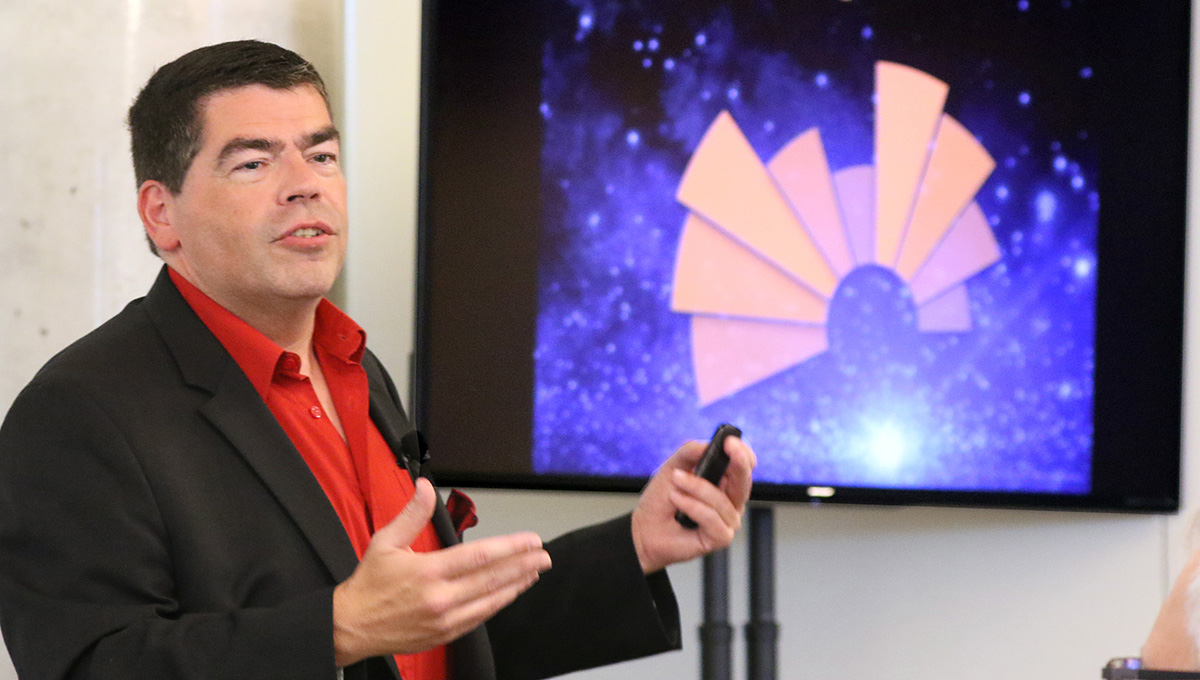
Higher education expert and futurist, Ken Steele.
“Every college or university should be thinking about mapping its own course and we don’t all have to take the same road,” Steele said at the time. “Strategic planning is your opportunity to figure out the route Carleton can take to get to where you want to be, which is one of the very creative and exciting things about this process — you get to do some lateral thinking to imagine where you want to go at this stage.
“We have heard that Carleton is well-positioned because it has been dynamic and innovative, it has been partnering with industry and it has some resources to invest. You have a strategic planning opportunity here to shape what the future could look like and it’s exciting to see an institution willing to accept a certain level of risk and to think big.”
At the beginning of the winter term, the SIP Task Force published a progress report to share a summary of the feedback received. This feedback played a crucial role in the development of the SIP.
“It has been an extraordinary privilege to engage this past year with over 1,300 members of the campus community who shared their vision and optimism for Carleton’s future,” says Lorraine Dyke. “The plan that emerged echoes the voice and the values of Carleton and integrates our past, our present and our future.”
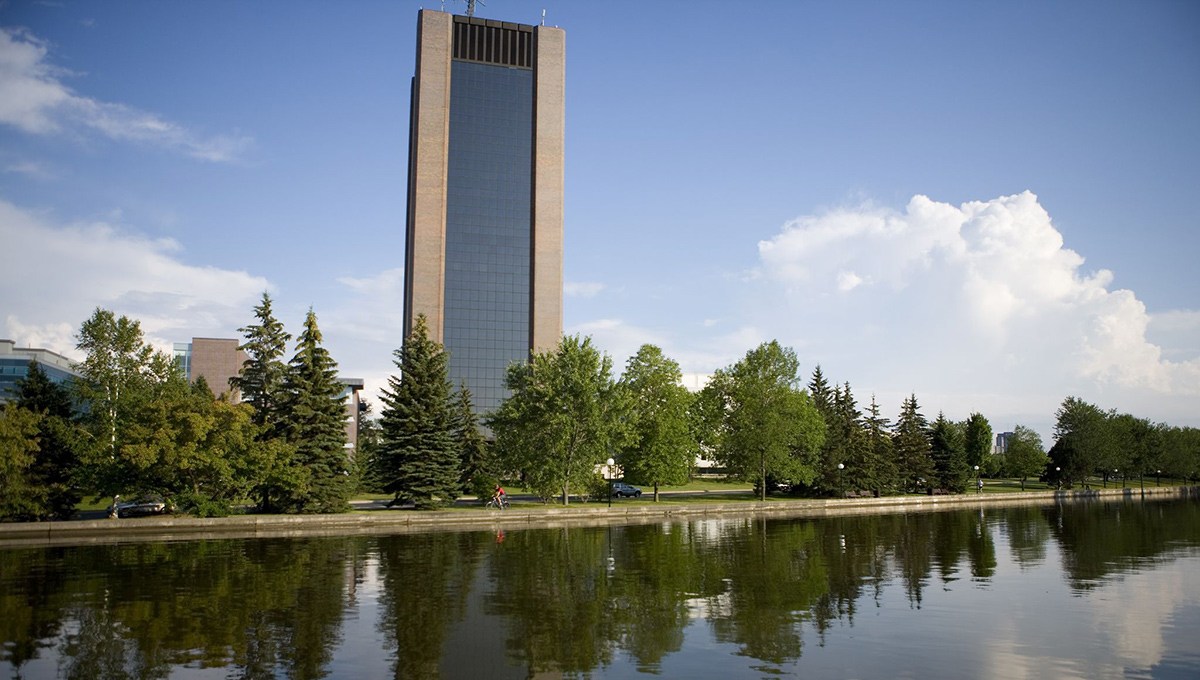
Wednesday, June 3, 2020 in Strategic Integrated Plan
Share: Twitter, Facebook



